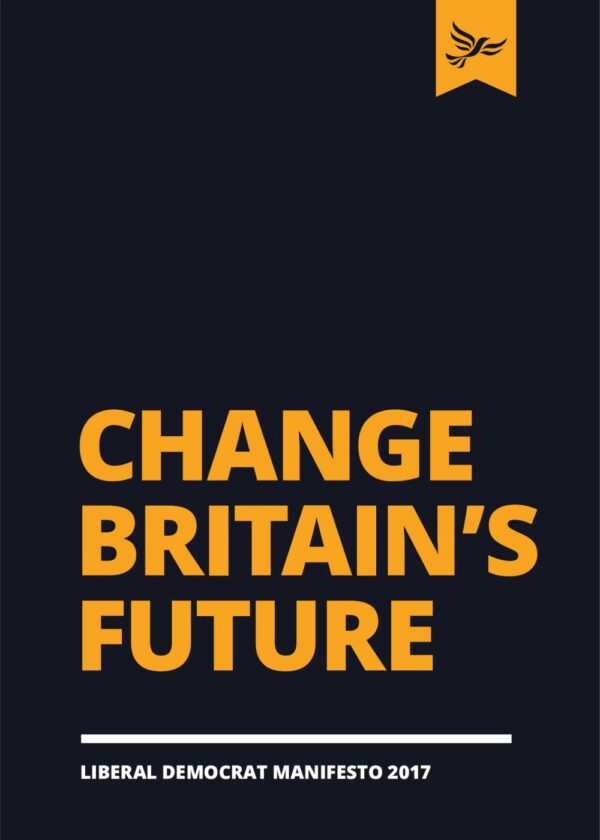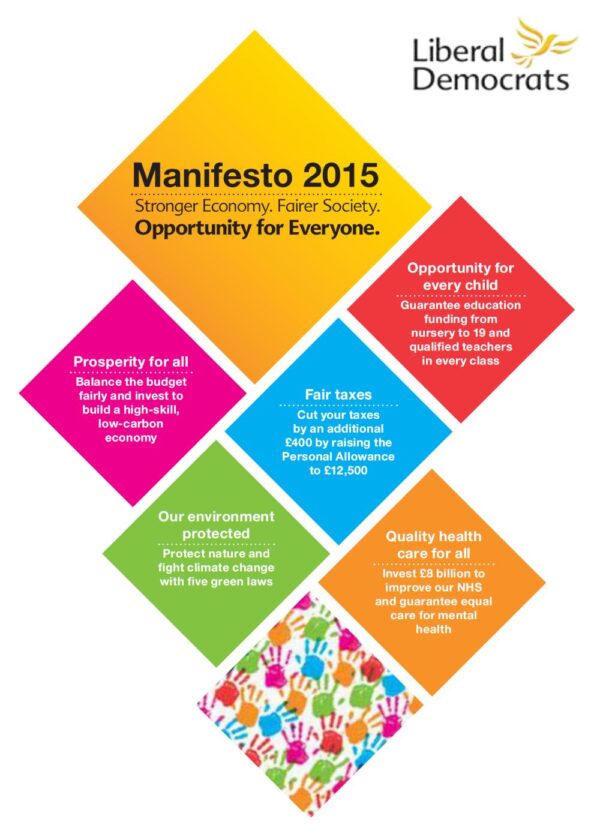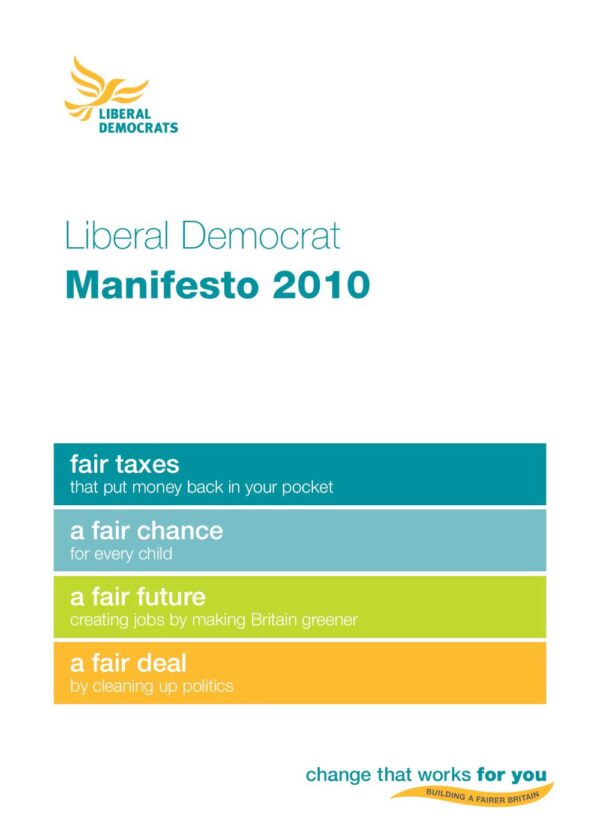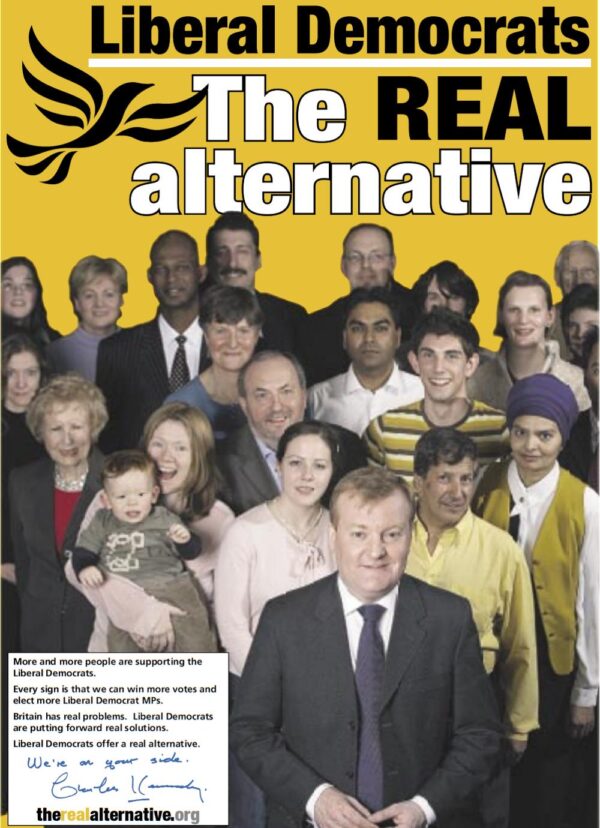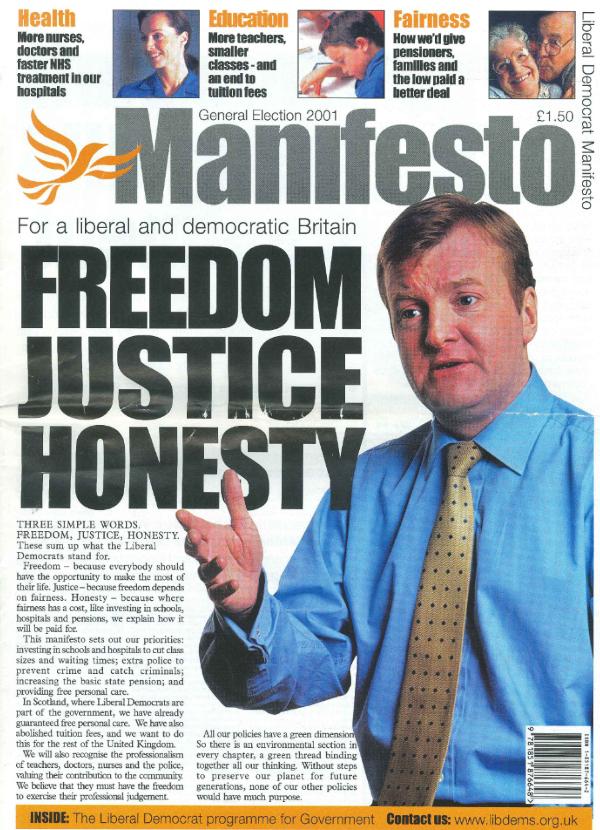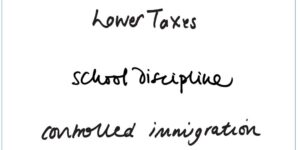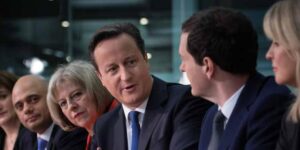This is a list of the British Liberal Democrats Party general election manifestos.
Quick PDF download links for UK Liberal Democrats Party general election manifestos.
Note: All PDF file downloads open in a new tab.
Liberal Democrats Party Manifesto 2024 PDF
Liberal Democrats Party Manifesto 2019 PDF
Liberal Democrats Party Manifesto 2017 PDF
Liberal Democrats Party Manifesto 2015 PDF
Liberal Democrats Party Manifesto 2010 PDF
Liberal Democrats Party Manifesto 2005 PDF
Liberal Democrats Party Manifesto 2001 PDF
2024 General Election Manifesto
UK General Election Date: Thursday, 4 July 2024
UK Liberal Democrats Party Leader: Ed Davey
Liberal Democrats Party Manifesto 2024 PDF
Manifesto tagline: For a Fair Deal
The Liberal Democrats won 72 seats with 12.2% of the vote in 2024. This was
61 seats more than in 2019, with an increased vote share of 0.7 percentage
points. The number of seats was higher than at any general election since
1923, when the Liberals won 158 seats. While the Liberal Democrat vote share
was higher in 2024 than in 2015, 2017 and 2019, it was lower than their postwar high in 2010, when they won 23% of the vote. The Liberal Democrats became the third largest party in the House of Commons for the first time
since they ceded this position to the SNP in 2015.
Labour under Keir Starmer returned to power after winning the election with a 173 seat majority.
Of note the new UK Reform Party led by Nigel Farage, gained 5 seats and received 14.3% of the vote across Great Britain.
2019 General Election Manifesto
UK General Election Date: Thursday, 12 December 2019
UK Liberal Democrats Party Leader: Jo Swinson
Liberal Democrats Party Manifesto 2019 PDF (PDF file opens in new tab)
Manifesto tagline: Stop Brexit, Build a Brighter Future
The Liberal Democrats won 11 seats and 11.5% of the UK vote, compared with 12 seats and a 7.4% vote share in 2017, both below the Party’s recent highest totals of 62 seats (22% of the vote) in 2005 and 23% of the vote in 2010.
Although the Liberal Democrats won more votes than in 2017, they ended up with one seat fewer. They gained three but lost four, ending up with 11.
The party’s vote share was higher than in 2015 and 2017 but lower than at any election between 1974 and 2010.
Jo Swinson lost her seat and resigned as leader. Prominent Lib Dems who were not reelected include former Conservative MP Sam Gyimah and former Labour MPs Luciana Berger and Chuka Umunna.
Liberal Democrat Stats: 611 Candidates, 3,696,419 Votes, 11.55% Vote Share, 11 MPs Elected.
2017 General Election Manifesto
UK General Election Date: Thursday, 8 June 2017
UK Liberal Democrats Party Leader: Tim Farron
Liberal Democrats Party Manifesto 2017 PDF (PDF file opens in new tab)
Manifesto tagline: Change Britain’s Future
The Liberal Democrats won 12 seats (up from 8) and 7.4% of the UK vote (down from 7.9%).
The Liberal Democrats lost four seats but gained eight, ending up with a total of 12, a net increase of four.
Their total votes and vote share decreased slightly compared with 2015.
Lib Dem losses included Southport (held since 1997) and Leeds North West (held since 2005). Gains included Twickenham, Eastbourne, East Dunbartonshire, and Bath. Several Lib Dems who lost their seats in 2015, including Vince Cable, Ed Davey and Jo Swinson, returned as MPs.
Liberal Democrat Stats: 629 Candidates, 2,371,861 Votes, 7.37% Vote Share, 12 MPs Elected.
Result was a hung Parliament with the Conservatives returned to power with DUP support.
Of note Brexit was a key issue during the campaign.
2015 General Election Manifesto
UK General Election Date: Thursday, 7 May 2015
UK Liberal Democrats Party Leader: Nick Clegg
Liberal Democrats Party Manifesto 2015 PDF (PDF file opens in new tab)
Manifesto tagline: Stronger Economy. Fairer Society. Opportunity for Everyone.
Liberal Democrats lost 49 of their previous 57 seats
The Liberal Democrats elected eight MPs to the House of Commons, 49 fewer than in 2010. The party was joint fourth largest in the House alongside the Democratic Unionist Party.
All eight Liberal Democrat MPs represent seats held by the party in 2010.
49 Liberal Democrat seats were lost to other parties compared to 2010. 27 seats represented by the Liberal Democrats in 2010 are now Conservative, 12 Labour and 10 SNP. Prominent Liberal Democrats to lose their seats include former Secretary of State for Business, Innovation and Skills Vince Cable (Twickenham), former Chief Secretary to the Treasury Danny Alexander (Inverness, Nairn, Badenoch & Strathspey), former Minister of State at the Ministry of Justice Simon Hughes (Bermondsey and Old Southwark) and former party leader Charles Kennedy (Ross, Skye and Lochaber).
In 2010, of the 46 seats in England and Wales represented by the Liberal Democrats the Conservatives came in second place in 34, Labour in 11 and Plaid Cymru in one. In 2015 the Conservatives took 27 of the 34 Liberal Democrat seats in which they had come second in 2010; the Liberal Democrats held six and Labour took one. Labour took all 11 of the Liberal Democrat seats in which its candidates had come in second place in 2010.
Across Great Britain’s 632 seats, in 2015 Liberal Democrat candidates came in second place in 63 seats, in third place in 36 and fourth in 338.
The party lost its deposit (that is, won 5% or less of the vote) in 341 constituencies, compared to none in 2010.
Liberal Democrat Stats: 631 Candidates, 2,415,900 Votes, 7.9% Vote Share, 8 MPs Elected.
2010 General Election Manifesto
UK General Election Date: Thursday, 7 May 2010
UK Liberal Democrats Party Leader: Nick Clegg
Liberal Democrats Party Manifesto 2010 PDF (PDF file opens in new tab)
Manifesto tagline: Change That Works for You
The Liberal Democrats won 57 seats, down 5 on 2005, but higher than any at any other general election since 1929. Their vote share, 23.6%, was the highest share since the Liberal/SDP Alliance in 1983. The Party’s vote share rose 0.9% points relative to 2005.
The Liberal Democrats’ 6.8 million votes, 23.0% of the total, was up on their 6.0 million votes, 22.0% of the total, in 2005. Their share of the vote was higher than any post-war election except 1983 when the Liberal-SDP Alliance had 27.6% of UK votes.
The Liberal Democrats’ vote share in England rose by 1.3% points, but they had a net loss of 4 seats. Their share of the vote in England was higher than any previous election since the Liberal-SDP Alliance in 1983.
Liberal Democrat Stats: 631 Candidates, 6,836,200 Votes, 23.0% Vote Share, 57 MPs Elected.
2005 General Election Manifesto
UK General Election Date: Thursday, 5 May 2005
UK Liberal Democrats Party Leader: Charles Kennedy
Liberal Democrats Party Manifesto 2005 PDF (PDF file opens in new tab)
Manifesto tagline: The Real Alternative
The Liberal Democrats polled 6.0 million votes, 22.0% of the total, up 3.8% points on 2001.
The Liberal Democrats won 10% of all constituencies in the UK at the 2005 General Election. However, these seats accounted for 30% of the area, a disparity predominantly accounted for by their geographically large seats in the Scottish Highlands.
The Liberal Democrats won 62 seats, the highest total for the Party or its predecessors since 1923. This was an increase of 11 on their notional 2001 position, comprising 16 gains and five losses. They won slightly fewer votes than in 1992, but the highest share of the total number of votes, 22.7%, since the Liberal/SDP Alliance in 1987. The Party’s vote share rose 3.8% points relative to 2001.
The Liberal Democrats made a net gain of seven seats in England compared with 2001, comprising 12 gains and five losses. Their share of the vote rose by 3.5% points.
The Liberal Democrats gained Cardiff Central from Labour and Ceredigion from Plaid Cymru. They were second in Wales in terms of seats won and third in terms of votes.
The Liberal Democrats came second in Scotland in terms of seats won and votes. They gained East Dunbartonshire and Inverness, Nairn, Badenoch & Strathspey, which were notionally Labour seats.
The Liberal Democrats won 22.0% of the UK vote, their highest since 1987 when the Liberal/SDP Alliance polled 23.1%. They won marginally fewer votes than in 1992.
The Liberal Democrats were second to Labour in terms of seats won in both Wales and Scotland.
The ten women Liberal Democrat MPs elected in 2005 is double that in 2001; 16% of Liberal Democrat MPs were women.
There were no minority ethnic Liberal Democrat MPs in 2005.
Liberal Democrat Stats: 626 Candidates, 5,985,500 Votes, 22.0% Vote Share, 62 MPs Elected.
2001 General Election Manifesto
UK General Election Date: Thursday, 7 June 2001
UK Liberal Democrats Party Leader: Charles Kennedy
Liberal Democrats Party Manifesto 2001 PDF (PDF file opens in new tab)
Manifesto tagline: Freedom, Justice, Honesty
The Liberal Democrats increased their number of seats by six to 52, their highest total since 1929;
The Liberal Democrats overtook the Conservatives in Scotland to take the third highest number of votes.
The Conservatives made nine gains – including five from Labour – but lost eight seats – seven of them to the Liberal Democrats.
The Liberal Democrats’ share increased by 1.5 points.
The Liberal Democrat share fell only in the South West. The Liberal Democrats were the only main party in Scotland to gain share.
The Liberal Democrats increased their share most in seats that they won from the Conservatives in 1997.
In seats where the Liberal Democrats were second to the Conservatives in 1997 their share increased but where Labour was second the Liberal Democrat share fell.
According to the organisation Operation Black Vote, there were 16 Conservative, 16 Labour and 25 Liberal Democrat ethnic minority candidates. Of these, twelve candidates, all Labour, won seats.
Liberal Democrat Stats: 639 Candidates, 4,814,321 Votes, 18.3% Vote Share, 52 MPs Elected.


